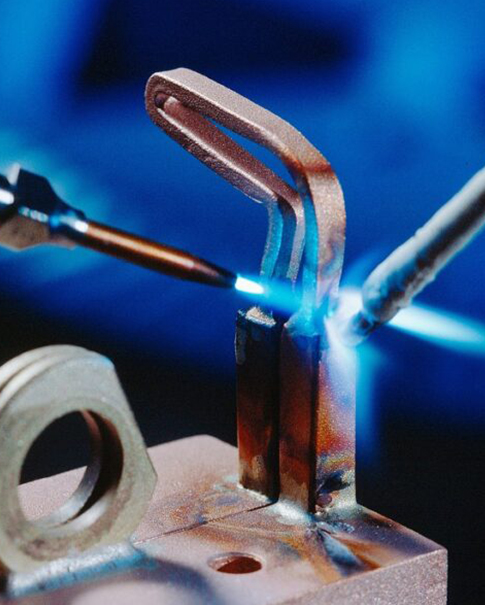A Comprehensive Guide to Welding with Brass Welding Rods
A Comprehensive Guide to Welding with Brass Welding Rods Welding with brass rods (often referred to as bronze rods) is technically a brazing process, not fusion welding. It's formally called Bronze Welding or Braze Welding. The base metal is heated, but not melted; the brass filler metal melts and bonds to the base metal through capillary action and adhesion. This process is excellent for joining copper, brass, steel, cast iron, and dissimilar metals. Key Principles: Base Metal: Heated but not melted. Filler Metal: Brass rod melts at a lower temperature than the base metal. Bond: Created by the molten brass alloy "wetting" and adhering to the prepared base metal surface. Equipment and Materials You Will Need 1. Heat Source: Oxy-Acetylene Torch: Most common and recommended. It provides a concentrated, hot flame with excellent control. Oxy-Propane Torch: A good alternative, though the flame is slightly less hot. TIG Welder (DCEN): Can be used for a very clean, precise weld. Requires a high-frequency start and good gas coverage. 2. Brass Welding Rods: Common types are RBCuZn-A (Naval Brass) or RBCuZn-C (Low-Fuming Bronze). Low-fuming rods are preferred as they produce less zinc oxide fumes. 3. Flux: Essential: Use a brazing flux specifically designed for copper-alloy rods. Purpose: Prevents oxidation, helps the molten brass flow and "wet" the base metal. 4. Safety Gear: Welding goggles/helmet with a shade 4-5 for gas welding. Heat-resistant gloves and leather apron. Ventilation Crucial. Welding brass produces zinc oxide fumes, which can cause metal fume fever. Work in a well-ventilated area or use a fume extraction system. 5. Other Tools: Wire brush (stainless steel) Grinder or sandpaper Clamps Step-by-Step Welding Procedure (Using Oxy-Acetylene) Step 1: Joint Preparation Clean Thoroughly: All dirt, oil, paint, rust, and oxides must be removed from the joint area. Use a grinder, sandpaper, or a wire brush. Cleanliness is critical for a strong bond. Fit-Up: Ensure the parts fit together well with a proper gap (if needed). Clamp them securely in position. Step 2: Applying Flux Coat the end of the brass rod with flux. You can heat the rod slightly and dip it into the flux canister, or use a brush to apply it. A thin layer of flux can also be applied to the clean base metal joint area. Step 3: Setting Up the Torch Use a neutral flame. An oxidizing flame (excess oxygen) will cause excessive oxidation and a poor weld. A carburizing flame (excess acetylene) can carbonize the joint. To get a neutral flame: Light the torch with acetylene only, then slowly add oxy...
- October 29, 2025
